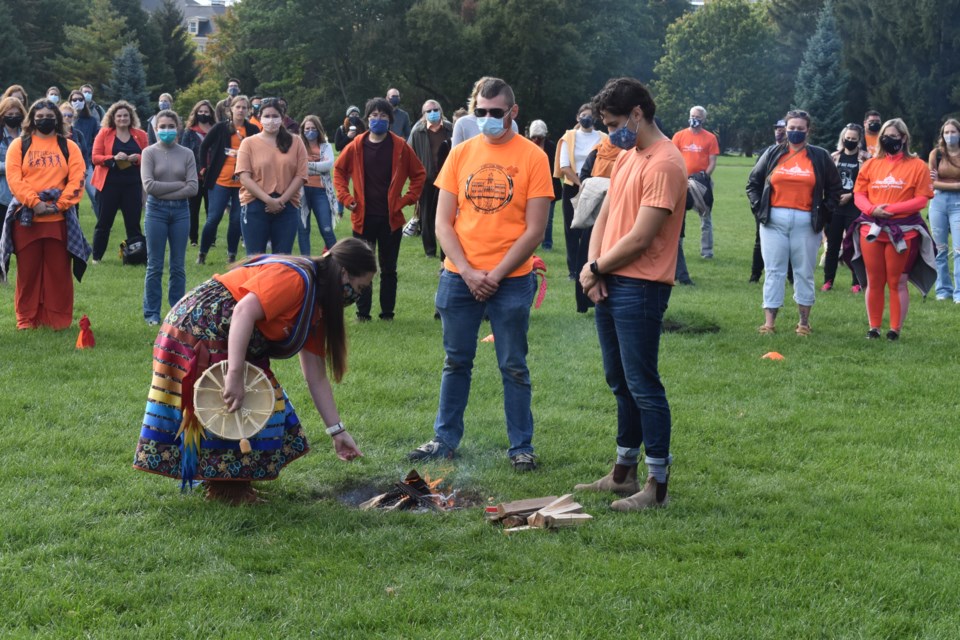Marking the first National Day for Truth and Reconciliation in Canada, the University of Guelph recognized residential school survivors and children who never returned home with Indigenous-lead ceremonies across the campus.
Created to honour the children, survivors, families, and communities affected by residential schools, the sombre undertones of the day gave way to hope, accountability and progression toward the Canadian government recognizing the atrocities of the past.
Students, many of who wore orange, gathered outside the Summerlee Science Complex at 10 a.m. where the Department of Integrative Biology’s Indigenous Belonging and Connections Committee dedicated a memorial outside the building for the ‘innocent lives lost and childhoods stolen through the Indian residential school system across Canada from 1831-1996.’
Melissa Perreault, associate professor and citizen of the Métis Nation of Ontario, said we need to remember this is not only our history, but it also is our present.
“Basically, today is a day of reflection and we are going to help everybody do that,” said Perreault.
The memorial outside the Summerlee Science Complex will be temporary as a bigger installation is expected to encompass the area with a memorial garden to provide a constant reminder of Canada’s creation and indigent treatment of Indigenous people.
The memorial set out on Thursday will be moved inside the building and placed alongside Indigenous artwork.
And while Truth and Reconciliation day was created as a statutory holiday, Perreault said the day is a step in the right direction, however, currently, it serves as giving government officials an extra day off while not addresses the full scope of the issues at hand.
“I’m really happy they are recognizing it, I am unhappy it is just a federal holiday. So essentially the settlers are getting a reward with a day off and all the Indigenous people who predominantly don’t work in government have to work.”
Later in the day, Johnston Green was transformed into a sacred fire ceremony, an important Indigenous approach to traditional wellness.
Lead by Dan and Mary Lou Smoke, the ceremony attracted hundreds of students who circled the fire to sing songs and learn traditional Indigenous teachings.
Dan said the ceremony is a traditional approach and an homage to the lives Indigenous people lived on what is now present-day Guelph.
The Guelph campus is located within the Between the Lakes Purchase (Treaty 3) and sits on the treaty lands and territory of the Mississaugas of the Credit.
It is recognized that the Anishinaabe and Hodinöhsö:ni' peoples have unique, long-standing, and ongoing relationships with the land and each other and that the Attawandaron people are part of the archeological record.
"This is an important day for not just Indigenous Peoples but all Canadians,” said Paige Saunders, Indigenous Student Society co-chair in a press release. “Today is a day to honour our communities and move forward with reconciliation. We need to confront our dark histories as Canadians and honour those who have survived genocide and move forward in a good way towards healing.”
In addition to the ceremonies, the university's McLaughlin Library added to its Exploring Indigenous Narratives and Worldviews Collection in recognition of Orange Shirt Day and the National Day of Truth and Reconciliation.
The Centre Chef’s Hall altered the menu for the day to serve a menu of Indigenous foods inducing Three Sisters Soup, salmon, sauteed leeks and mushrooms with cider cream, bison and root vegetables stew, wild rice pilaf, sweet potato mash and bannock.
